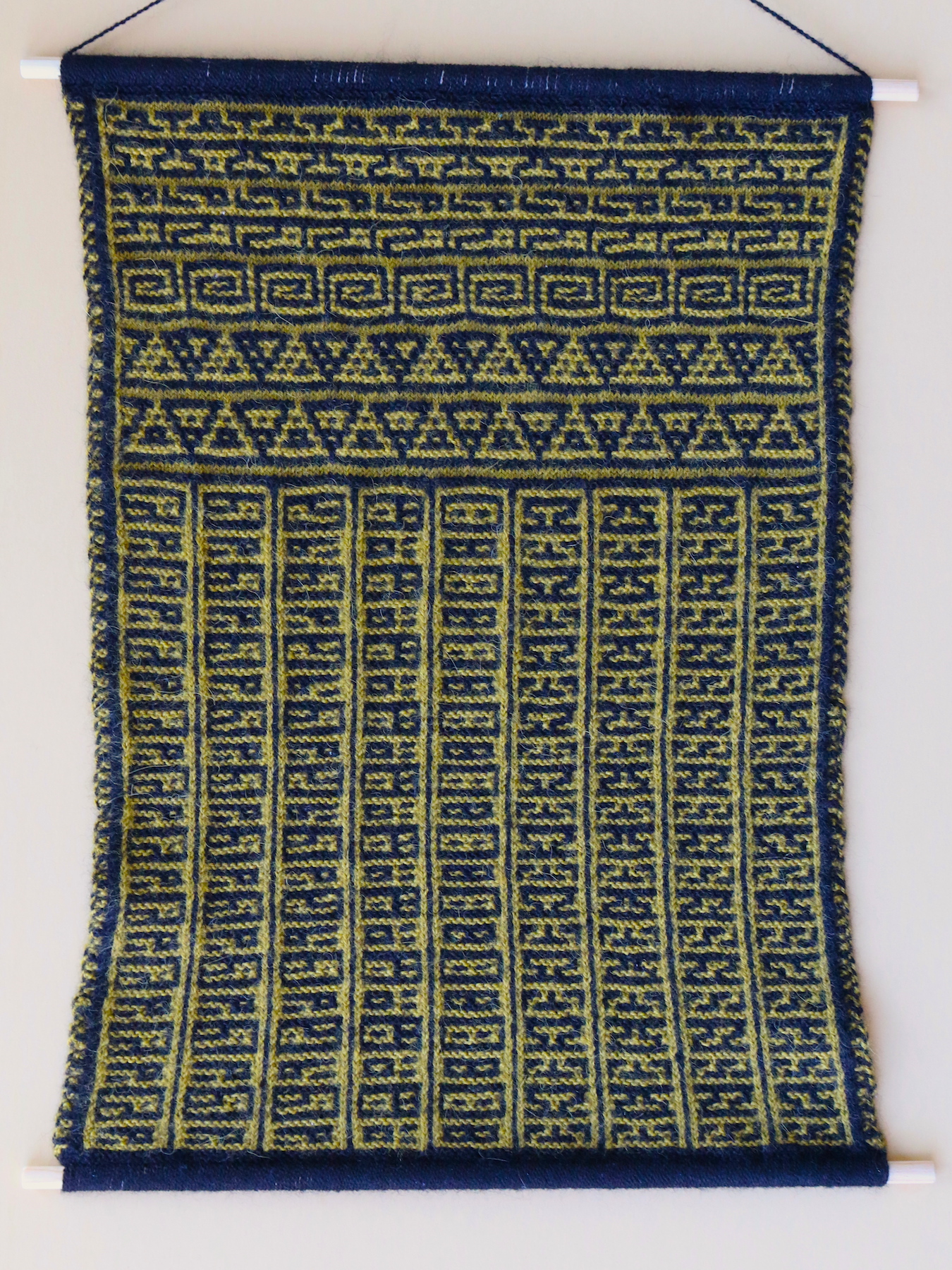Float Free, Bumblebee
Merino/alpaca yarn, wooden dowels
2018
Joint Mathematics Meetings Exhibition of Mathematical Art, Denver, January 2020
Bridges Art Exhibition, Linz, Austria, July 2019
Mathematical Beauty–AAAS Gallery Exhibit, Washington, DC, March–June 2019

An outgrowth of current research by the artist and Carolyn Yackel, this knitted scroll shows the two-color frieze groups attainable in mosaic knitting. Mosaic knitting, a popular type of two-color knitting, imposes unusual constraints on color placement that limit the types of symmetry attainable in the form.
In older forms of two-color knitting, extended runs of a single color create long yarn floats across the back of the fabric, making the wrong side unruly and prone to snagging and the right side hard to keep neat and even. In this piece, the only floats are at the edges of the fourteen designs, and each is only two stitches wide.
There are seventeen two-color frieze groups, which are the possible symmetries of a strip pattern that has at least one symmetry that swaps the two colors. However, our research proves three of them to be impossible in mosaic knitting, and nine more to be impossible to knit horizontally. These nine appear side-by-side at the bottom of the scroll, and the remaining five run across the top.
Float Free, Bumblebee was knit by hand on 1.75 mm needles.